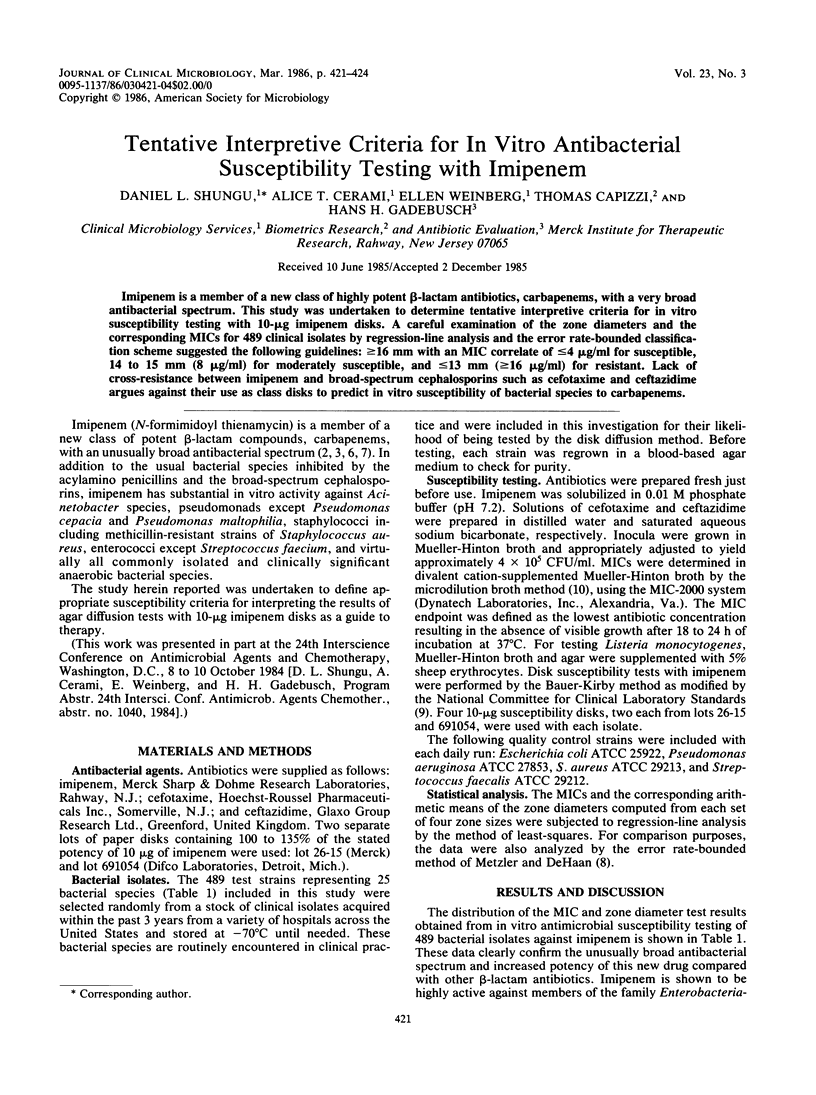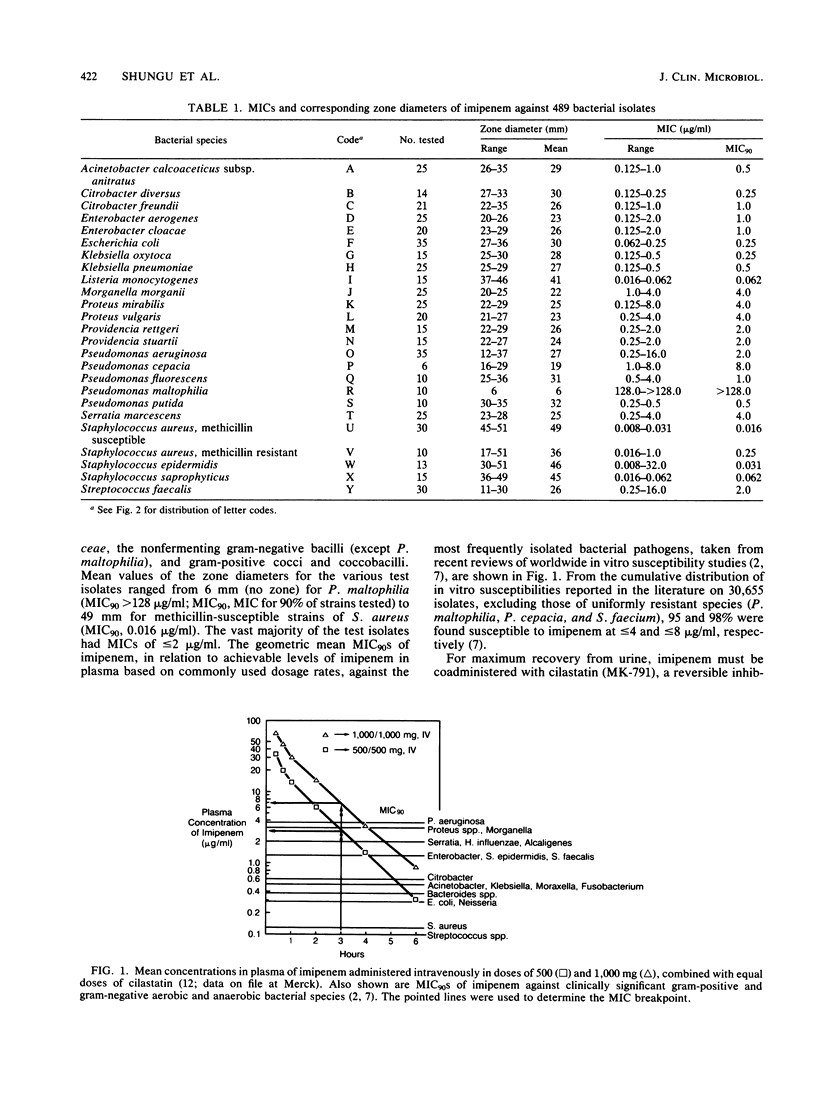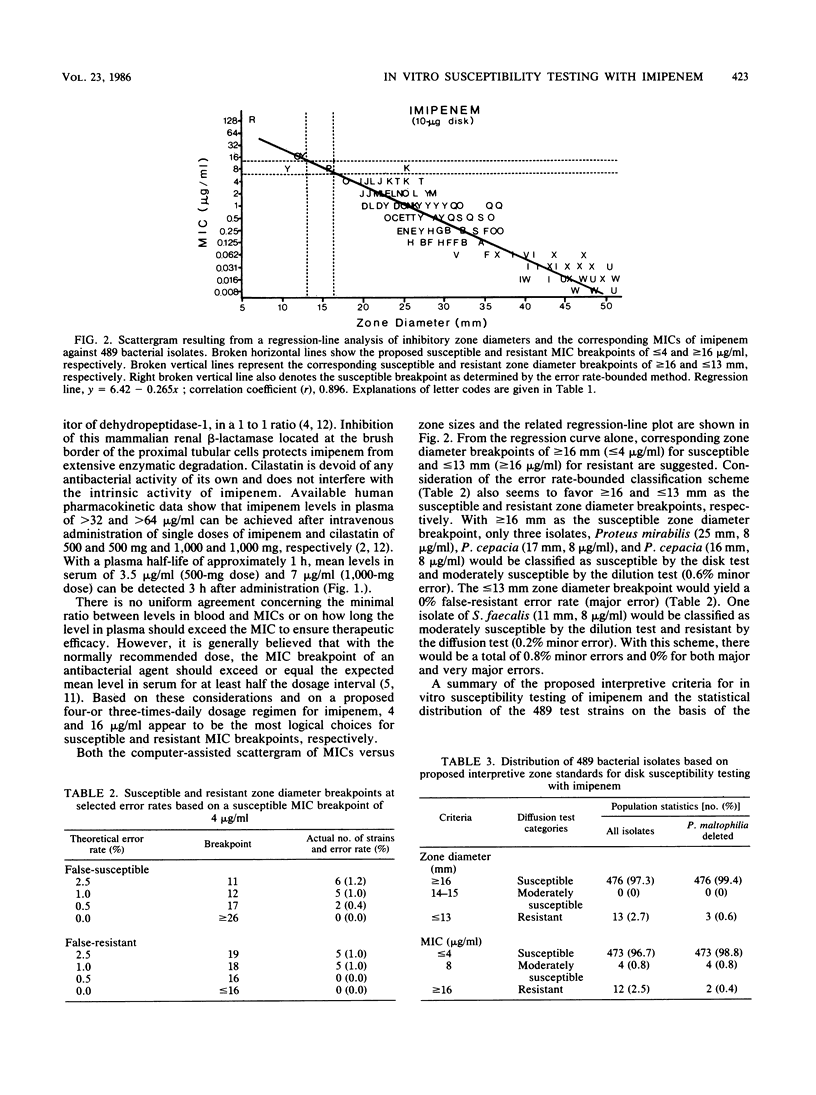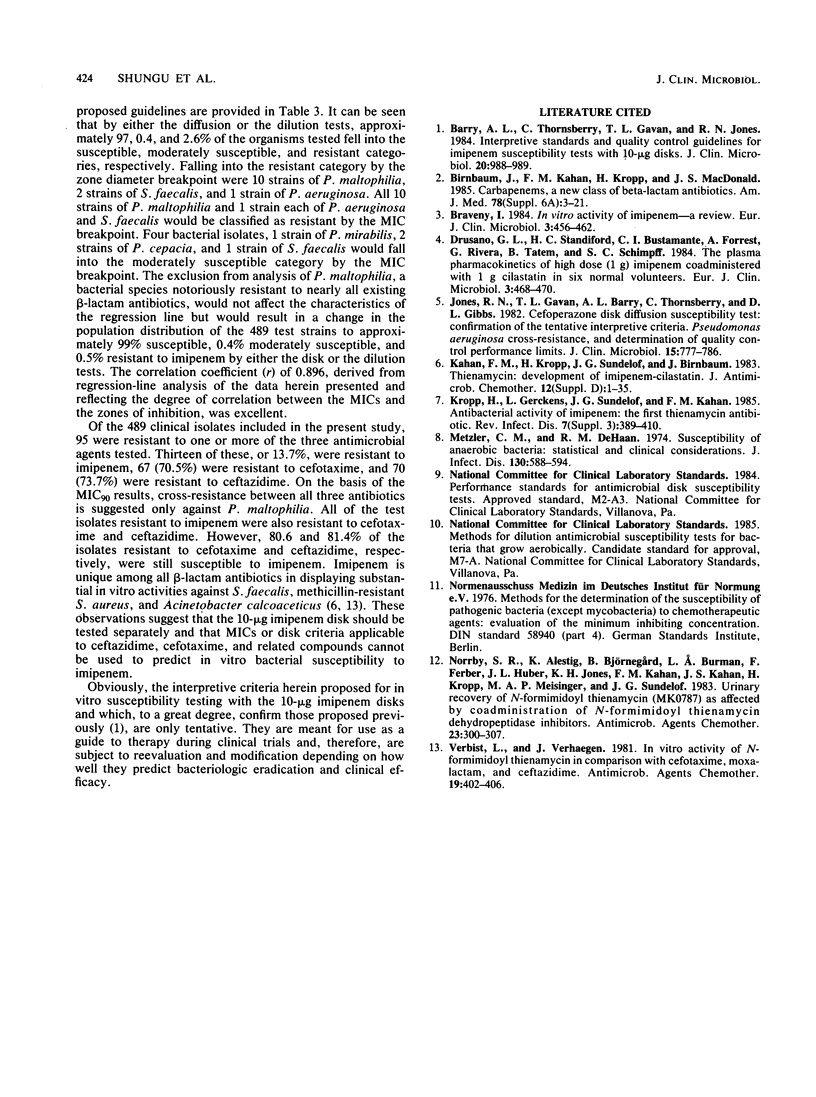Abstract
Imipenem is a member of a new class of highly potent beta-lactam antibiotics, carbapenems, with a very broad antibacterial spectrum. This study was undertaken to determine tentative interpretive criteria for in vitro susceptibility testing with 10-micrograms imipenem disks. A careful examination of the zone diameters and the corresponding MICs for 489 clinical isolates by regression-line analysis and the error rate-bounded classification scheme suggested the following guidelines: greater than or equal to 16 mm with an MIC correlate of less than or equal to 4 micrograms/ml for susceptible, 14 to 15 mm (8 micrograms/ml) for moderately susceptible, and less than or equal to 13 mm (greater than or equal to 16 micrograms/ml) for resistant. Lack of cross-resistance between imipenem and broad-spectrum cephalosporins such as cefotaxime and ceftazidime argues against their use as class disks to predict in vitro susceptibility of bacterial species to carbapenems.
Full text
PDF



Selected References
These references are in PubMed. This may not be the complete list of references from this article.
- Barry A. L., Thornsberry C., Gavan T. L., Jones R. N. Interpretive standards and quality control guidelines for imipenem susceptibility tests with 10-micrograms disks. J Clin Microbiol. 1984 Nov;20(5):988–989. doi: 10.1128/jcm.20.5.988-989.1984. [DOI] [PMC free article] [PubMed] [Google Scholar]
- Birnbaum J., Kahan F. M., Kropp H., MacDonald J. S. Carbapenems, a new class of beta-lactam antibiotics. Discovery and development of imipenem/cilastatin. Am J Med. 1985 Jun 7;78(6A):3–21. doi: 10.1016/0002-9343(85)90097-x. [DOI] [PubMed] [Google Scholar]
- Braveny I. In vitro activity of imipenem--a review. Eur J Clin Microbiol. 1984 Oct;3(5):456–462. doi: 10.1007/BF02017375. [DOI] [PubMed] [Google Scholar]
- Drusano G. L., Standiford H. C., Bustamante C. I., Forrest A., Rivera G., Tatem B., Schimpff S. C. The plasma pharmacokinetics of high dose (1 g) imipenem coadministered with 1 g cilastatin in six normal volunteers. Eur J Clin Microbiol. 1984 Oct;3(5):468–470. doi: 10.1007/BF02017377. [DOI] [PubMed] [Google Scholar]
- Jones R. N., Gavan T. L., Barry A. L., Thornsberry C., Gibbs D. L. Cefoperazone disk diffusion susceptibility test: confirmation of the tentative interpretive criteria, Pseudomonas aeruginosa cross-resistance, and determination of quality control performance limits. J Clin Microbiol. 1982 May;15(5):777–786. doi: 10.1128/jcm.15.5.777-786.1982. [DOI] [PMC free article] [PubMed] [Google Scholar]
- Kahan F. M., Kropp H., Sundelof J. G., Birnbaum J. Thienamycin: development of imipenen-cilastatin. J Antimicrob Chemother. 1983 Dec;12 (Suppl 500):1–35. doi: 10.1093/jac/12.suppl_d.1. [DOI] [PubMed] [Google Scholar]
- Metzler C. M., DeHaan R. M. Susceptibility tests of anaerobic bacteria: statistical and clinical considerations. J Infect Dis. 1974 Dec;130(6):588–594. doi: 10.1093/infdis/130.6.588. [DOI] [PubMed] [Google Scholar]
- Norrby S. R., Alestig K., Björnegård B., Burman L. A., Ferber F., Huber J. L., Jones K. H., Kahan F. M., Kahan J. S., Kropp H. Urinary recovery of N-formimidoyl thienamycin (MK0787) as affected by coadministration of N-formimidoyl thienamycin dehydropeptidase inhibitors. Antimicrob Agents Chemother. 1983 Feb;23(2):300–307. doi: 10.1128/aac.23.2.300. [DOI] [PMC free article] [PubMed] [Google Scholar]
- Verbist L., Verhaegen J. In vitro activity of N-formimidoyl thienamycin in comparison with cefotaxime, moxalactam, and ceftazidime. Antimicrob Agents Chemother. 1981 Mar;19(3):402–406. doi: 10.1128/aac.19.3.402. [DOI] [PMC free article] [PubMed] [Google Scholar]


